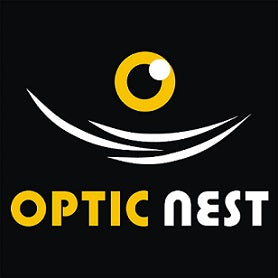Understanding Myopia: Causes, Consequences, and Modern Management | Optic Nest | Optician in Bangalore
Understanding Myopia: Causes, Implications, and Solutions
Myopia, commonly known as nearsightedness, is a vision condition that has become increasingly prevalent across the globe. This essay will explore the causes of myopia, its implications, and the various solutions available to manage or prevent it.

Causes of Myopia
Myopia occurs when the eye's structure results in light focusing in front of the retina instead of directly on it, causing distant objects to appear blurry while close objects remain clear. Several factors contribute to this condition:
-
Genetics: A family history of myopia significantly increases the risk of developing the condition. Studies suggest that children with one or both myopic parents are more likely to develop myopia themselves.
-
Environmental Factors: Modern lifestyles, particularly those involving prolonged close-up tasks like reading, using computers, or staring at smartphones, contribute to myopia. Reduced time spent outdoors is also associated with a higher risk of myopia, possibly due to less exposure to natural light and less engagement in distance-focused activities.
-
Age: Myopia typically begins in childhood or adolescence, with a higher risk of progression during periods of rapid growth. This progression often stabilizes in adulthood.
Implications of Myopia
Myopia can have several significant implications, affecting both quality of life and health outcomes:
-
Impact on Daily Activities: Myopia can make everyday activities like driving, watching movies, or participating in sports challenging without corrective lenses. It can also affect academic and occupational performance, particularly in fields that require excellent long-distance vision.
-
Increased Risk of Eye Conditions: Severe myopia (high myopia) can increase the risk of developing other eye conditions, such as retinal detachment, glaucoma, and cataracts. These complications may lead to permanent vision loss if not properly managed.
-
Economic and Social Costs: The need for corrective lenses, regular eye exams, and potential medical interventions can lead to significant economic costs. Additionally, myopia may limit career choices in fields that require perfect vision without correction.
Solutions and Management of Myopia
Various solutions are available to manage myopia, ranging from corrective measures to prevention strategies:
-
Corrective Lenses: Eyeglasses and contact lenses are the most common solutions for correcting myopia. These devices refocus light onto the retina, allowing for clear distance vision.
-
Refractive Surgery: Procedures like LASIK and PRK can correct myopia by reshaping the cornea. These surgeries are typically considered for adults with stable vision, offering a permanent solution to myopia.
-
Orthokeratology (Ortho-K): This non-surgical method uses specially designed contact lenses worn overnight to reshape the cornea temporarily, allowing clear daytime vision without lenses.
-
Atropine Eye Drops: Low-dose atropine eye drops have been shown to slow the progression of myopia in children, providing a preventive approach to managing the condition.
-
Increased Outdoor Time: Spending more time outdoors, particularly during childhood, has been associated with a lower risk of developing myopia. This preventive strategy is thought to be due to increased exposure to natural light and a broader range of visual activities.
Conclusion
Myopia is a growing concern worldwide, with significant implications for individual health and societal costs. Understanding its causes and potential risks is crucial for developing effective management and prevention strategies. By combining corrective measures with lifestyle changes and early intervention, it is possible to reduce the impact of myopia on individuals and society.
